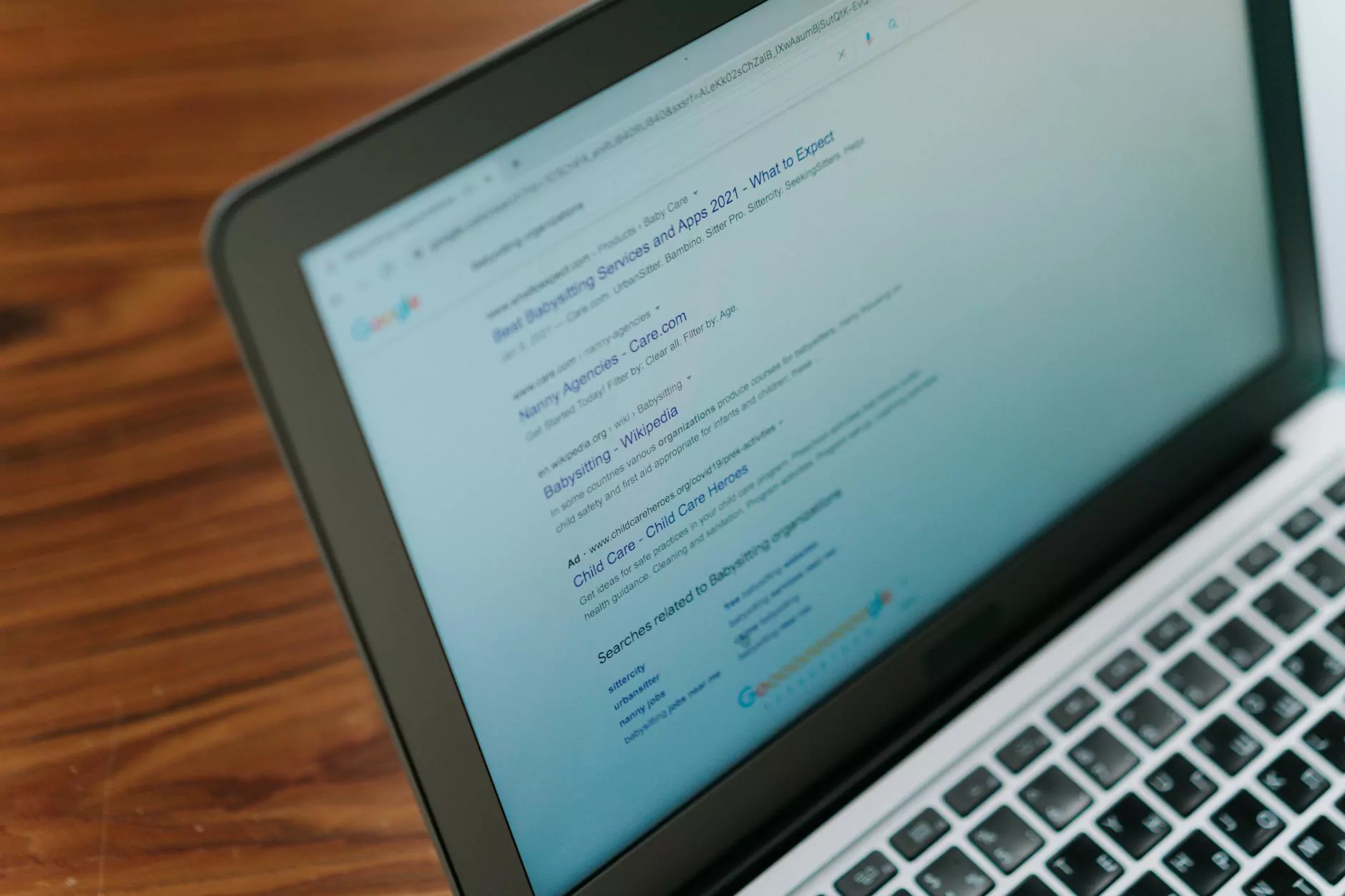My Google Rankings Dropped Dramatically - Immediate Steps to Audit for a Google Penalty
Blog
Introduction
Welcome to One and Only Web Design, your go-to source for professional website development services in the business and consumer services industry. If you are reading this, chances are your Google rankings have taken a significant hit, and you are seeking immediate solutions to audit for a Google penalty and regain your lost visibility. In this comprehensive guide, we will discuss the steps you need to take to identify potential penalties and provide actionable tips to recover your rankings.
Understanding Google Penalties
Google penalties can be detrimental to your website's visibility in search engine results pages (SERPs). With the constantly evolving algorithms, it's essential to adapt and adhere to Google's guidelines to maintain and improve your rankings. Before diving into the audit process, let's understand the different types of penalties:
1. Algorithmic Penalties
Algorithmic penalties occur when your website fails to meet Google's quality guidelines, resulting in a drop in rankings. These penalties are typically automatic and are triggered by certain algorithm updates, such as Google Panda or Google Penguin. It's crucial to assess your website for any on-page or off-page issues that may have triggered algorithmic penalties.
2. Manual Penalties
Manual penalties, on the other hand, are imposed by human reviewers from Google. These penalties are issued when your website violates Google's Webmaster Guidelines explicitly. Manual penalties require a thorough audit and remedial actions to regain your lost rankings.
Audit Process
1. Review Google Search Console
The first step in auditing for a Google penalty is to review your Google Search Console (previously known as Webmaster Tools) for any notifications or messages from Google regarding potential penalties. Look for any manual actions placed on your site and address them accordingly.
2. Check for Algorithmic Penalties
To identify potential algorithmic penalties, analyze your website's organic traffic patterns using Google Analytics or other analytics platforms. Look for sudden drops or fluctuations in traffic that coincide with major Google algorithm updates. Conduct a thorough review of your website's on-page content, backlink profile, and technical aspects to identify and rectify any issues that may be triggering algorithmic penalties.
3. Thorough On-Page Analysis
Analyze your website's on-page elements, including meta tags, headings, content quality, keyword optimization, and internal linking structure. Ensure that your content is relevant, comprehensive, and provides value to users. Make necessary optimizations to align your website with Google's best practices.
4. Assess Backlink Profile
Examine your website's backlink profile for any suspicious or low-quality links. Identify and disavow toxic or spammy links that may be negatively impacting your rankings. Focus on acquiring high-quality, relevant backlinks from authoritative sources in your industry.
5. Technical SEO Analysis
Perform a comprehensive technical SEO analysis to identify any crawling, indexing, or site structure issues that may be affecting your rankings. Ensure your website is mobile-friendly, has fast page load times, and is devoid of any duplicate content or canonicalization errors.
6. User Experience Optimization
Optimize your website for a seamless user experience. Improve navigation, site speed, and mobile responsiveness. Enhance the overall user interface and make it easy for visitors to find relevant information on your website.
Recovering from Penalties
1. Rectify Identified Issues
Address all the issues identified during the audit process promptly. Make the necessary optimizations to your website's on-page elements, backlink profile, technical SEO, and user experience. Ensure your website aligns with Google's guidelines and best practices.
2. Submit a Reconsideration Request
If you received a manual penalty notification and have rectified all the issues, submit a reconsideration request through Google Search Console. Clearly explain the steps taken to address the penalties and provide evidence of the improvements made. Be patient as it may take some time for Google to review your request.
3. Build High-Quality Content and Links
Focus on consistently creating high-quality content that addresses the needs and queries of your target audience. Develop a content strategy that incorporates relevant keywords and provides value. Attract authoritative backlinks through outreach, guest blogging, and collaborations with industry influencers.
4. Monitor and Adapt
Regularly monitor your website's performance, search rankings, and traffic. Stay updated with Google's algorithm changes and adapt your strategies accordingly. Continuously improve your website's user experience, content quality, and backlink profile to maintain and improve your rankings over time.
Conclusion
In conclusion, if your Google rankings have dropped dramatically, it's crucial to take immediate steps to audit for a Google penalty and implement the necessary remedial actions. One and Only Web Design is here to assist you in recovering your lost rankings and optimizing your website for long-term success. Contact us today to discuss how our professional website development services can help you regain your online visibility and drive organic traffic to your business.




